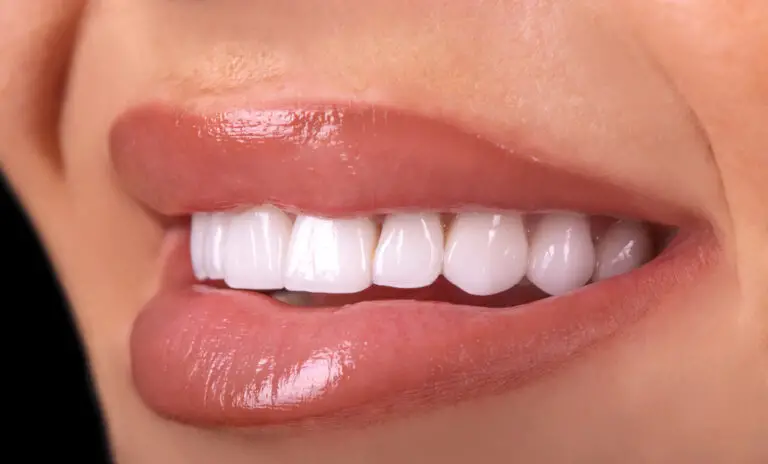An overview of what teeth reveal about health, lifestyle and evolution
Human teeth are intricate structures that can provide a wealth of information about an individual’s health, lifestyle and evolutionary history. Teeth develop gradually throughout childhood and into early adulthood, forming hard enamel casings around sensitive pulp tissue. Their composition and development is influenced by genetics, diet, behavior and environmental conditions.
Studying teeth can provide insights into a person’s or population’s nutritional health, growth patterns, and risk for certain diseases. Teeth also preserve clues about lifestyle, culture and evolutionary relationships. Here’s an overview of what various features of teeth can reveal.
Tooth development reflects prenatal and childhood health
The timeline of tooth development is highly regulated, making teeth useful indicators of health disturbances in the womb and during childhood.
Enamel formation
Tooth enamel forms in the womb and early childhood as specialized ameloblast cells progressively add layers of mineral to the developing tooth crown. Disruptions to ameloblast function and enamel mineralization from nutritional deficiencies, illness, medications or other influences can leave microscopic defects in enamel that are permanently recorded.
Studying enamel can reveal:
- Prenatal and early childhood exposure to nutritional deficiencies and heavy metals based on location and timing of enamel defects
- Systemic metabolic stress during enamel formation, suggested by hypoplastic defects
- Illness duration based on extent of enamel affected
Age estimation
Tooth development is strongly age-dependent up to late adolescence. Comparing a child’s dental maturation against reference standards can provide reasonably accurate estimates of age. This has many practical applications, including:
- Estimating age of juveniles in anthropological or forensic contexts
- Assessing appropriate timing of orthodontic treatments that should coincide with periods of rapid growth
- Estimating age of birth based on prenatal line visibility in enamel, useful in anthropology
Growth patterns
By observing timelines when different teeth began and completed enamel formation, researchers can garner information about an individual’s growth patterns and health during development, including:
- Growth disruption from nutritional deficiencies, disease, or other early life stresses reflected in delays or duration of enamel formation
- Exposure to physiological stress during childhood inhibiting long-term or permanent tooth formation
- Onset and duration of breastfeeding or weaning based on isotopic analysis of tooth formation timing
In sum, close examination of enamel growth patterns provides a timeline of prenatal and childhood health and growth.
Dental wear patterns reflect diet and behavior

Teeth are exposed to extreme pressures and abrasive forces during chewing and parafunctional behaviors like clenching. The resulting wear patterns that accumulate in the enamel and dentin provide insights into diet, food processing methods, and oral habits.
Dietary reconstruction
Patterns of dental microwear (tiny pits and scratches in enamel) can reflect dietary composition, particularly toughness and abrasiveness of foods. Analyzing microwear helps reconstruct diet, linking archeological specimens to known diets of hunter-gatherers vs. agriculturalists. Features include:
- More distinct microwear features in hunter-gatherers suggesting reliance on tough foods
- Increased microscopic pitting in agriculturalists indicative of more abrasive diets high in gritty grains and fibrous foods
Macrowear patterns also indicate reliance on stone grinding to process tough, fibrous foods vs. food quality changes with cooking and industrialized processes.
Parafunctional wear patterns
Non-dietary habits often leave their mark on teeth as well. Parafunctional behaviors like bruxism, toothpicking, and using teeth as tools create abnormal localized wear patterns, providing clues about cultural practices and behavior, such as:
- Oblique planar wear suggestive of using teeth to soften animal hides
- Interproximal grooving indicating habitual passing of fibrous materials between teeth
- Notching at the incisal edge from clenching behaviors or using the teeth as tools
In short, characteristic dental wear provides clues about the foods eaten and oral behaviors practiced in life. Wear patterns help anthropologists link archeological specimens to known diet and food processing methods.
Dental morphology and metrics inform evolutionary history
Teeth evolve distinctive features across generations in adaptation to specialized diets. Analyzing dental morphology and metrics allows anthropologists to study evolutionary relationships between species and populations.
Tooth size
Tooth dimensions reflect the extent of food processing required for different diets. For example:
- Hunter-gatherers often have larger teeth better suited for chewing fibrous foods
- With the agricultural transition came a general reduction in tooth size
- Industrialized populations continue showing smaller teeth with food processing advancements
Comparing tooth size across populations and archeological specimens allows assessment of changing dietary patterns over time.
Tooth shape
The shape of crown contours and cusp patterns is adapted for a species’ specialized diet. For example:
- Sharp teeth in carnivores shred meat
- Broad flattened teeth in herbivores grind tough plant fibers
- Omnivores have multi-cusped teeth for varied diets
Studying evolutionary changes in crown features helps reconstruct diet and feeding ecology in extinct species.
Genetic and geographic variation
Subtle natural variations in tooth crown traits can inform population origins and genetic relationships. Dental metrics and frequent non-metric crown and root traits also exhibit geographic patterning that assists bioarcheological reconstructions.
In summary, characteristics like tooth size and shape provide information about a species’ specialized feeding ecology and evolutionary adaptations. Examining dental variations across populations also clarifies genetic relationships and geographic affiliations.
Dental disease reveals risk factors and health history

Teeth are susceptible to characteristic diseases that provide lifelong information about an individual’s health behaviors, disease exposures, and genetic predispositions.
Caries
Tooth decay results from chronic bacterial plaque interacting with frequent intake of fermentable carbohydrates. Observing caries patterns helps assess risk factors such as:
- Diet high in cariogenic processed foods, sugars, and acidic drinks
- Poor oral hygiene allowing buildup of plaque
- Developmental defects like deep fissures and enamel hypoplasia that trap bacteria
Periodontal disease
Chronic bacterial infection and inflammation of the gums and supporting structures leads to progressive damage. Periodontal problems can indicate:
- Accumulation of plaque bacteria with poor oral hygiene
- Systemic conditions like diabetes affecting inflammatory response
- Environmental irritants such as smoking
Developmental disorders
Developmental disturbances leave permanent signs of childhood illness or trauma, including:
- Enamel hypoplasia indicating systemic metabolic stressors
- Hypocalcification and hypomineralization from nutritional deficiencies
- Trauma, infection, toxins or radiation affecting enamel development
Other disorders
Many other dental abnormalities occur that provide diagnostic clues, such as:
- Tooth discoloration pointing to prior pulp damage, infection, metabolic conditions or tetracycline staining
- Anomalies like supernumerary teeth associated with syndromes
- Malocclusions indicating genetic predispositions or oral habits
Overall, characteristic dental diseases accumulate evidence of poor diet and hygiene habits, developmental disturbances, genetic conditions and systemic disease. Careful study of dental remains provides a remarkable long-term record of health and disease history.
Frequently Asked Questions
What types of analysis are used to learn about ancient diets from teeth?
Two common techniques used are:
- Dental microwear analysis – Scanning electron microscopy is used to examine microscopic pits and scratches in tooth enamel that reflect dietary abrasiveness.
- Isotope analysis – Measuring ratios of chemical isotopes absorbed from foods can quantify consumption of different food sources like meat vs. plants.
How can you determine someone’s age from their teeth?
Age estimation utilizes the predictable sequence of tooth development. Teeth form at known ages, allowing age determination by matching developmental stage against reference data. Tooth eruption patterns and signs of wear can also assist age approximation.
Can missing teeth provide any clues about lifestyle or health?
Yes, antemortem tooth loss can result from:
- Periodontal disease indicating infection and inflammation
- Severe caries pointing to frequent consumption of cariogenic foods
- Cultural practices like intentional modification or as a ritual rite of passage
- Trauma reflecting participation in violent conflict or harmful behaviors
What is dental fluorosis and what does it indicate?
Dental fluorosis refers to discoloration and pitting of enamel caused by excessive fluoride intake early in development. Mild forms show opaque white patches while more severe forms have brown stains and porous defects. It indicates elevated fluoride exposure especially during enamel formation.
Can you tell if ancient remains were male or female from the teeth?
Sex determination from skeletal remains utilizes features like bone robustness and size, but teeth alone are not reliable indicators of sex. However, in combination with other bone markers and anthropologic context, distinctive dental traits like large canines and pronounced ridges on molars may provide clues suggesting male or female sex.







